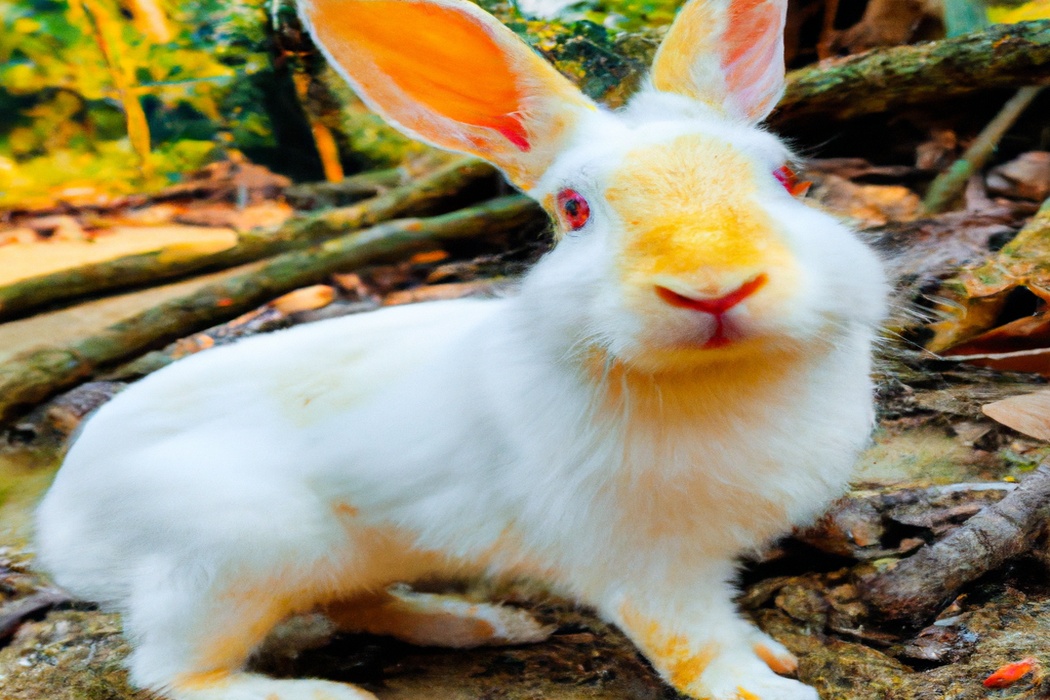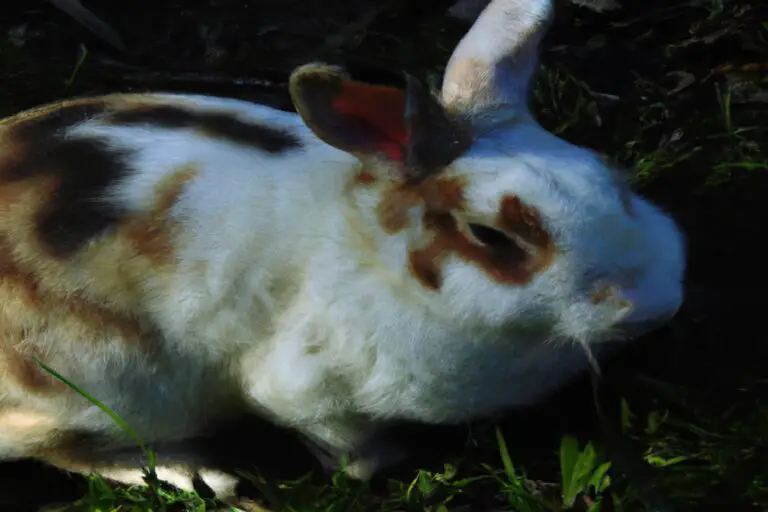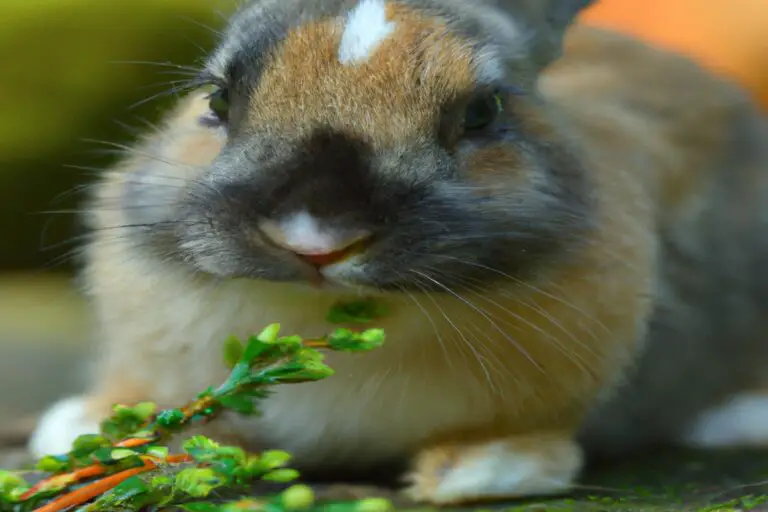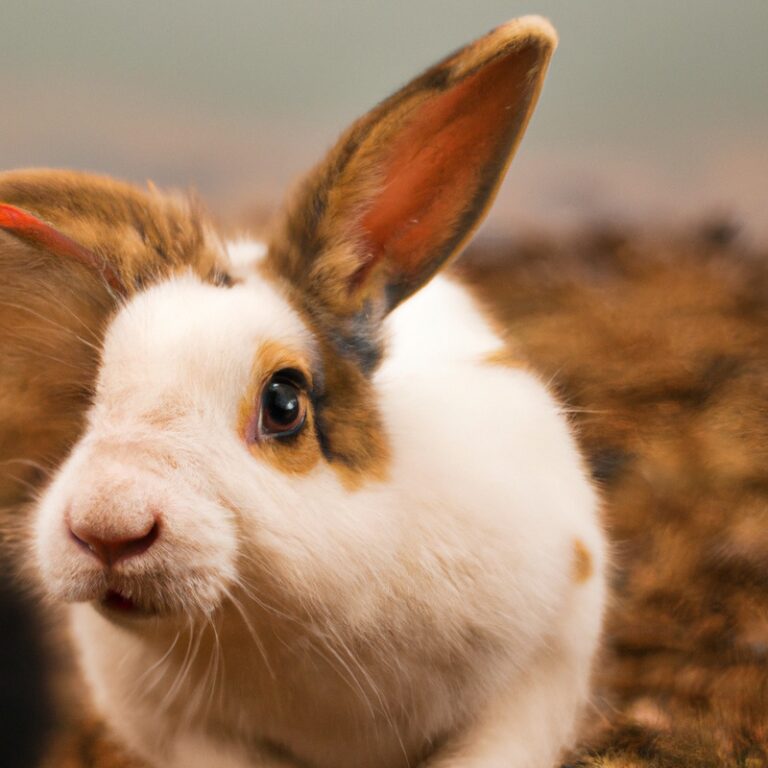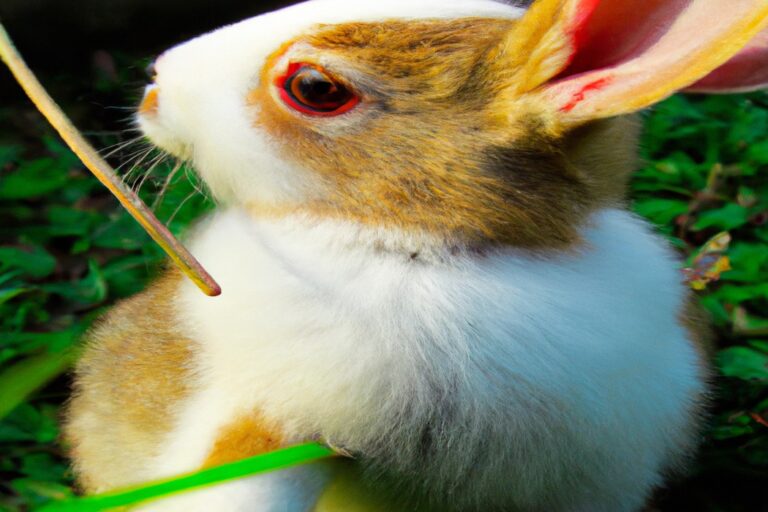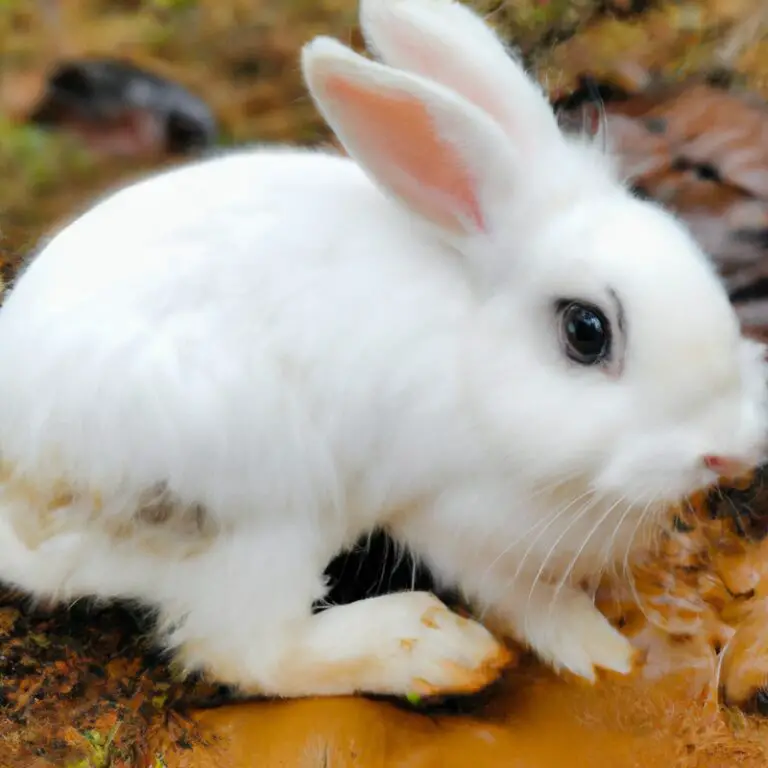What Do Rabbit Holes in Yard Look Like – Revealed!
Key Takeaways:
- Rabbit holes in yards are typically small, round openings in the ground.
- These holes are often surrounded by disturbed soil or excavated dirt.
- Rabbit holes can vary in depth but are generally shallow.
- They may be interconnected and form complex networks known as burrows.
Are you a proud homeowner with a yard that always seems to have a surprise waiting for you?
While some surprises can be delightful, stumbling upon rabbit holes in your yard might not be the kind of surprise you were hoping for.
But fear not! In this article, we’ll dive into the world of rabbit holes and help you identify what they look like.
From the characteristics and size of the holes to signs of rabbit activity, we’ll equip you with the knowledge to understand these mysterious burrows.
So, if you ever find yourself wondering, “What does a rabbit hole in my yard actually look like?” – read on to satisfy your curiosity and become the yard detective you were meant to be.
| Rabbit Holes | Description |
|---|---|
| Size | Rabbit holes are typically small and can range from 3 to 5 inches (7.6 to 12.7 cm) in diameter. |
| Shape | Rabbit holes are generally round or oval-shaped. |
| Depth | The depth of a rabbit hole can vary, but it is usually around 12 to 18 inches (30 to 45 cm). |
| Entrance | Rabbit holes typically have a small entrance, which is often surrounded by a mound of soil. |
| Tunnels | Beneath the entrance, the hole may extend into a network of tunnels used for nesting, sleeping, and escaping from predators. |
How to Identify Rabbit Holes in Your Yard
To identify rabbit holes in your yard, look for small, neat holes or large, irregular ones, often located in open areas of grass, near fences or walls, and along garden edges. Watch for signs of rabbit activity like freshly dug soil, piles of dirt outside the hole, and chewed plant stems or leaves nearby.
What Does a Rabbit Hole Look Like?
A rabbit hole is usually a round hole in the ground, about 3 to 4 inches in diameter.
It can be shallow or deep, depending on how deep the rabbit has dug.
The hole may have loose soil around it and can be surrounded by grass or vegetation that’s been nibbled by the rabbit.
Inside the hole, you might find tunnels branching off in different directions.
So, if you spot a small round hole with disturbed soil and nearby signs of rabbit activity, you’ve likely found a rabbit hole in your yard.
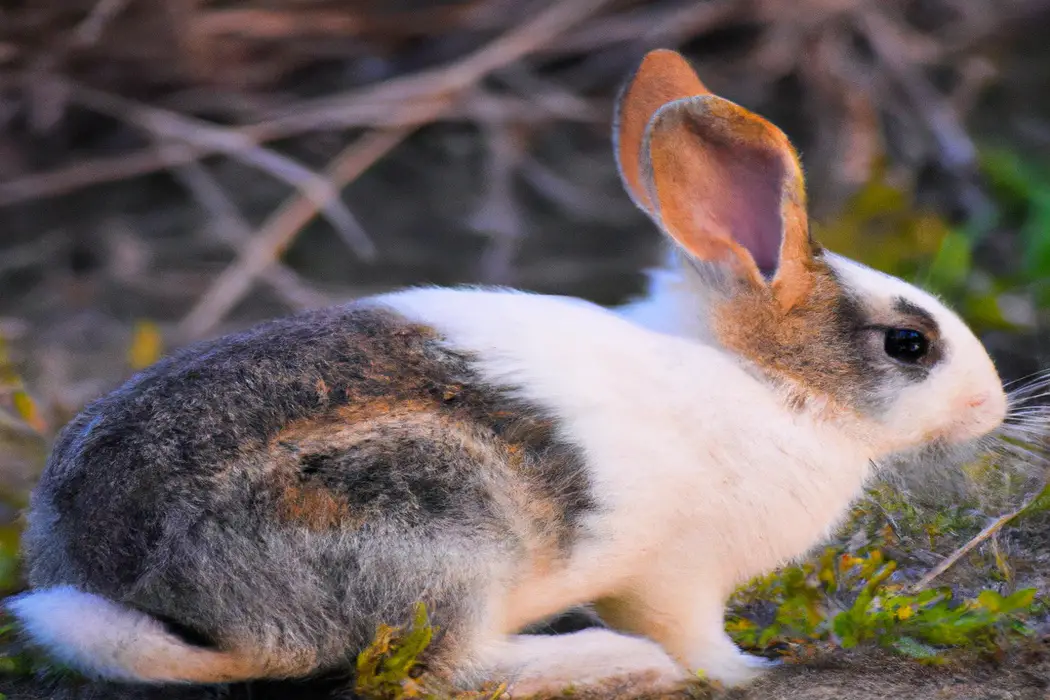
Characteristics of Rabbit Holes
Rabbit holes in your yard can be identified by certain characteristics.
These holes are typically small and round, with a diameter of about 2-3 inches.
They can be found in soft soil, often near vegetation or shrubs.
Rabbit holes also tend to have loose, scattered soil around the entrance.
You may notice fresh digging or tracks leading to and from the hole.
It’s important to identify these characteristics to address any potential issues with rabbits in your yard.
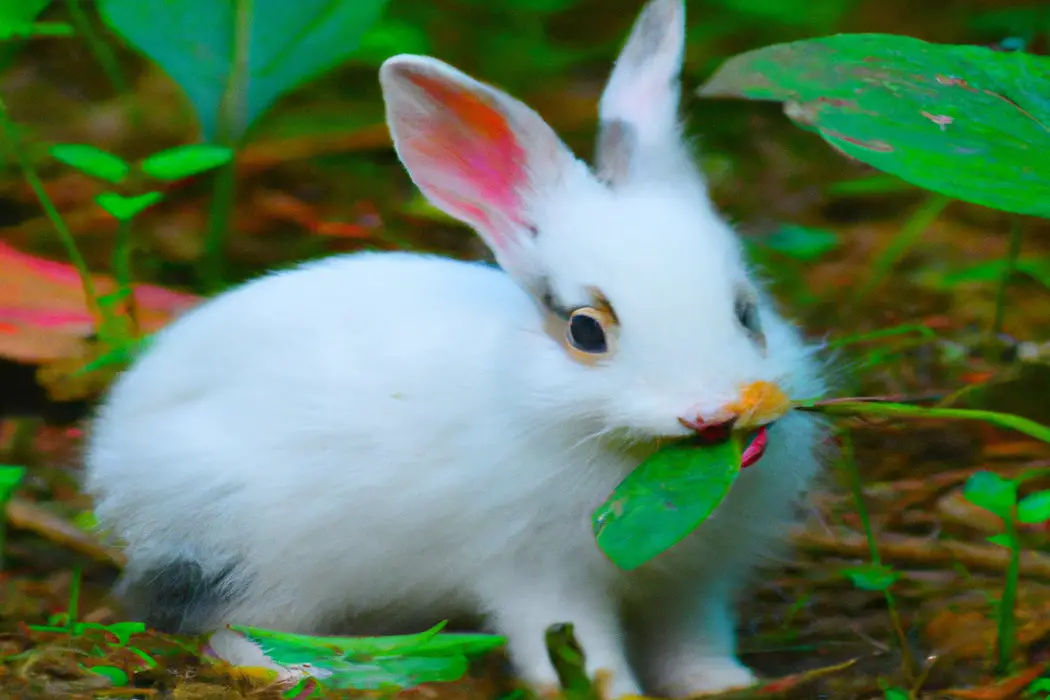
Identifying Rabbit Holes by Size and Shape
Identifying rabbit holes by size and shape can give you clues about the type of rabbit that created them.
Here are some tips:
- Size: Rabbit holes are usually about 2-4 inches in diameter. Smaller holes may indicate the presence of young rabbits or smaller species, while larger holes could be made by larger rabbits.
- Shape: Rabbit holes are typically round or oval-shaped, with a mound of loose soil or dirt around the entrance. The shape of the hole can also vary depending on the angle at which the rabbit dug it.
- Depth: Rabbit holes can vary in depth, but they are usually between 8-10 inches deep. Deeper holes may indicate a more established burrow system.
- Multiple entrances: Some rabbit burrows have multiple entrances, which can indicate a complex network of tunnels.
Keep in mind that other animals, such as groundhogs or squirrels, may also dig holes similar to rabbit holes.
If you’re unsure, consult with a local wildlife expert to help you identify the specific animal creating the holes in your yard.
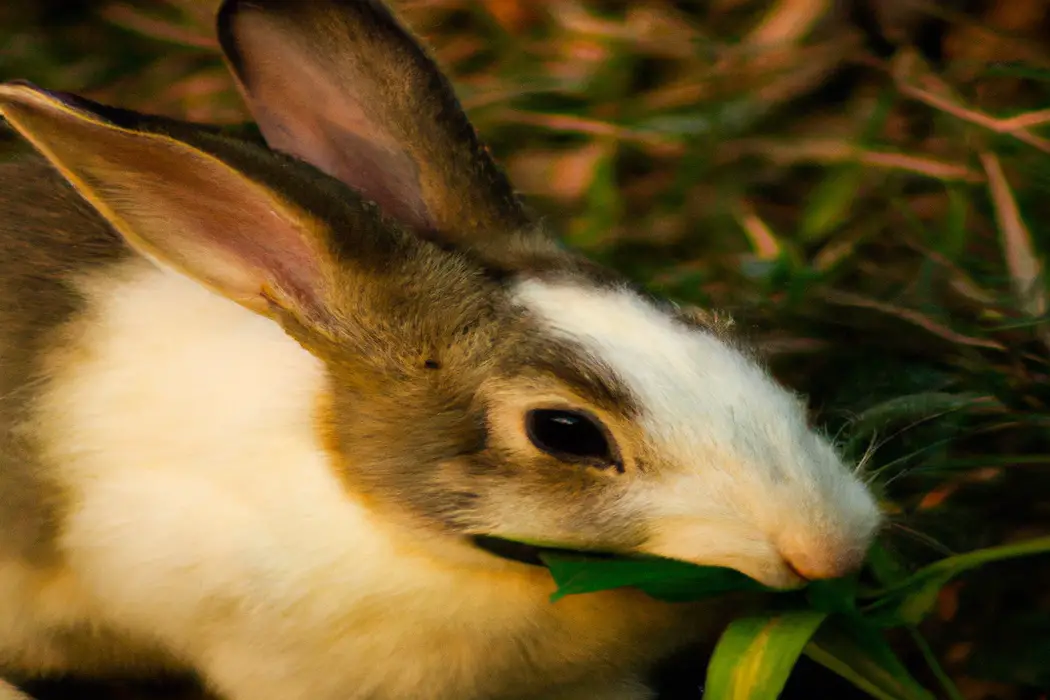
Small, Neat Holes
Small, neat holes in your yard could be an indication of rabbits. These holes are typically about 2 inches in diameter and are neatly dug into the ground.
They are round and have smooth edges.
If you spot these small, neat holes, it’s likely that rabbits have made your yard their home.
Large, Irregular Holes
Large, irregular holes in your yard can indicate the presence of burrowing animals such as groundhogs, skunks, or raccoons.
These holes are typically wider than traditional rabbit holes and may have a mounded appearance due to the animal digging and pushing dirt out of the hole.
Additionally, the size and shape of the hole may vary depending on the animal.
If you notice these types of holes in your yard, it’s important to address the issue promptly to prevent further damage.
Identifying Rabbit Holes by Location
Identifying rabbit holes by location is key to understanding the presence of rabbits in your yard.
Look for small holes in the ground, typically around 2-4 inches in diameter.
Rabbit holes are usually found in areas with tall grass, shrubs, or near structures like fences or sheds.
They can be hidden under dense vegetation or debris.
Additionally, pay attention to the frequency of holes in certain areas, as rabbits often create colonies and dig multiple holes in close proximity.
Open Areas of Grass
Open areas of grass in your yard can often be ideal spots for rabbits to make their holes. These areas typically consist of short, well-maintained grass without dense shrubbery or vegetation.
Rabbit holes in open grass areas are generally round or oval-shaped with a diameter of about 3 to 4 inches.
Look for small mounds of loose soil or freshly dug dirt around the entrance of the hole. Additionally, you may notice flattened grass or pathways leading to and from the holes as rabbits frequently use the same routes.
Edges of Gardens or Flowerbeds
The edges of gardens or flowerbeds are important for defining the boundaries and maintaining a neat appearance. To create clean edges, you can use a garden spade or an edging tool to cut a straight line where the lawn meets the garden.
This will prevent grass and weeds from encroaching on your plants.
Additionally, you can install edging materials such as bricks, stones, or metal strips to create a more defined and permanent border. Regular maintenance is important to keep the edges looking sharp by trimming any overgrown grass or plants.
Near Fences or Walls
Near fences or walls, you may often find rabbit holes in your yard. These burrows are usually located close to these structures because they provide shelter and protection for the rabbits.
The holes can be small and round, approximately 2-4 inches in diameter, and may have dirt or debris around them.
Additionally, you may notice chewed vegetation or tracks near the entrances. Keep an eye out for these signs to identify rabbit holes near fences or walls in your yard.
Signs of Rabbit Activity Around Holes
Signs of Rabbit Activity Around Holes can be easily identified by observing certain indicators.
Look for fresh droppings near the hole, as well as chewed plant leaves and stems nearby.
Listen for scratching sounds inside the hole, which indicate a rabbit’s presence.
Another clue is the presence of fur or tracks around the entrance.
Additionally, rabbits may create shallow scrapes around the hole, known as “forms,” where they rest.
Keep an eye out for these signs to determine if rabbits are active in your yard.
Freshly Dug Soil
Freshly dug soil is a clear sign of rabbit activity in your yard.
Rabbits create burrows by digging into the ground to create shelter or nesting sites.
These holes are typically round or oval-shaped and can vary in depth.
You may notice loose soil scattered around the hole, indicating recent digging.
Keep an eye out for these freshly dug soil areas as they can help you identify the presence of rabbits in your yard.
Pile of Dirt Outside the Hole
If you spot a pile of dirt outside a hole in your yard, it’s a good sign that it’s a rabbit hole. Rabbits typically dig holes in the ground to create their burrows.
These burrows serve as their homes and provide protection from predators.
When rabbits dig their burrows, they often push the excess dirt out of the hole, resulting in a pile of dirt near the entrance. So if you come across such a pile in your yard, chances are you have some furry neighbors hopping around.
Chewed Plant Stems or Leaves Nearby
If you notice chewed plant stems or leaves nearby, it’s a strong indication of rabbit activity in your yard. Rabbits are notorious for nibbling on vegetation, so their presence can be easily detected by the damage they leave behind.
Look for signs of munching and missing foliage, as well as stems that have been gnawed down to the ground.
This can help you identify and address any rabbit holes in your yard.
Confirming Rabbit Presence
Confirming the presence of rabbits in your yard can be done by looking for certain signs.
Here are a few ways to do it:
- Rabbit droppings: Look for small, pellet-like droppings scattered around your yard. Rabbit droppings are usually round and dark in color.
- Chewed vegetation: If you spot chewed or nibbled vegetation, especially at ground level, it could indicate the presence of rabbits. They have a preference for tender plants.
- Burrows: Rabbits create burrows to live in. Look for small holes in the ground with freshly dug soil around them. These burrows can be found near fences, shrubs, or in tall grass.
Remember, these signs can help confirm the presence of rabbits, but it’s always a good idea to consult with a local wildlife expert for further confirmation and advice on how to manage them if necessary.
Observing Rabbits in the Yard
Observing rabbits in your yard can be a delightful experience. To do so, find a comfortable spot where you can quietly watch without disturbing the rabbits.
Look for signs of their presence, such as fresh tracks or nibbled plants.
Rabbits are most active during dawn and dusk, so those are great times to observe them. When you spot a rabbit, stay still and avoid sudden movements.
Tracks or Droppings Near the Holes
One way to identify rabbit holes in your yard is by looking for tracks or droppings near the holes. Rabbits leave behind distinct tracks, which usually consist of two parallel sets of footprints.
These tracks can help you confirm the presence of rabbits and locate their burrows.
Additionally, you may find rabbit droppings near the holes, which are small, round, and often clustered together. These signs can give you a clear indication of rabbit activity in your yard.
FAQs about Rabbit Holes in Yards
Sure, here are some FAQs about rabbit holes in yards:
1. What causes rabbit holes in yards?
Rabbit holes are typically formed by burrowing rabbits in search of food, shelter, or as a part of their natural behavior.
These holes can be found in various locations throughout your yard.
2. Are rabbit holes dangerous?
Rabbit holes themselves are not typically dangerous.
However, they can pose a tripping hazard or damage your lawn if left untreated.
Additionally, they may attract other animals or pests.
3. How can I identify rabbit holes in my yard?
Rabbit holes are usually small and round, ranging in diameter from a few inches to several inches.
They generally have loose soil nearby and may show signs of recent activity such as fresh dig marks or droppings.
4. Can rabbit holes damage my property?
While rabbit holes themselves may not cause significant damage, the associated burrowing activity can impact the stability of nearby structures like fences, foundations, or garden beds.
It’s important to address the issue to prevent potential problems.
5. How do I prevent rabbits from making holes in my yard?
To discourage rabbits from creating holes in your yard, consider removing food sources and implementing deterrents like fencing or natural repellents.
Additionally, keeping your lawn well-maintained and free from debris can make it less enticing for them to dig.
Remember, if you’re unsure about the presence of rabbits or concerned about the impact of their activity, it’s best to consult with a professional pest control expert for advice and assistance.
Do Rabbit Holes Pose a Threat to My Yard?
Rabbit holes can pose a threat to your yard. These holes, which are created by burrowing rabbits, can damage your lawn and plants.
The rabbits may eat your grass and flowers, resulting in an unsightly and unhealthy yard.
Additionally, the excess digging can loosen the soil and create trip hazards for you and your family. It’s important to address the presence of rabbit holes in your yard to maintain its appearance and safety.
How Can I Prevent Rabbits from Digging Holes in My Yard?
To prevent rabbits from digging holes in your yard, here are a few effective methods:
- Fence your yard: Install a sturdy fence around your property to keep rabbits out. Make sure the fence is buried a few inches underground to prevent them from burrowing underneath.
- Remove attractants: Clear away food sources like vegetation and fallen fruits. Regularly clean up debris and clutter in your yard, as this can attract rabbits.
- Use repellents: Apply natural or commercial rabbit repellents around your yard. These products emit odors that rabbits find unpleasant.
- Plant rabbit-resistant plants: Choose plants that rabbits are less likely to eat, such as lavender, marigolds, and daffodils. This can discourage them from entering your yard.
- Create barriers: Surround vulnerable areas like gardens and flower beds with chicken wire or mesh to keep rabbits from accessing them.
By employing these methods, you can discourage rabbits from digging holes in your yard and preserve the aesthetics of your outdoor space.
Final Verdict
Identifying rabbit holes in your yard can be key to understanding the presence of these furry intruders.
By looking for certain characteristics such as size, shape, and location, you can easily spot these telltale signs.
The presence of fresh soil, piled dirt, and chewed plant stems are also strong indicators of rabbit activity.
Confirming their presence through observations or the presence of tracks and droppings near the holes will provide further evidence.
While rabbit holes don’t necessarily pose a threat, taking preventive measures can help keep your yard free from unwanted digging.
By understanding and recognizing these signs, you can take action and ensure a peaceful coexistence with these furry neighbors.

